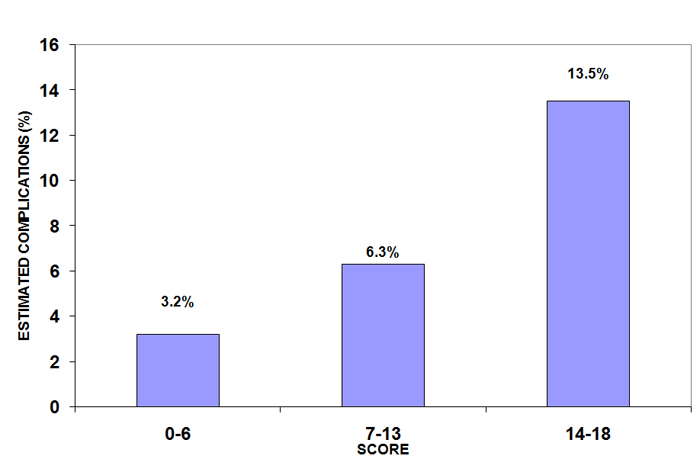Predicting Major Postoperative In-Hospital Complications after Laparoscopic Cholecystectomy: A Simple Risk Score
Melissa M. Murphy, MD, MPH, Shimul Shah, MD, Jessica P. Simons, MD, Nicholas G. Csikesz, BS, Sing-Chau Ng, MS
Zheng Zhou MD, PhD, Jennifer F. Tseng, MD, MPH
Accepted for oral presentation at the Surgical Society of the Alimentray Tract (SSAT) Annual Meeting, Digestive Diseases Week (DDW), Chicago, IL, June 2009; manuscript submitted to Journal of Gastroinstinal Surgery
Step 1. Calculate Charlson comorbidity score
Indicate "yes" for the comorbidities that the patient has. This validated algorithm (Charlson, ME et al. J Chron Dis 1987; 40(5):373-83.) assigns a point value to the various diseases. The patient's raw score will then be reassigned into the collapsed Charlson score groups for use in the risk score calculation. Group 1 is a score of zero or 1, Group 2 is a score of 2, Group 3 is a score of 3 or higher.

|
10/28/2015: We are happy to announce the first issue of the Department of Surgery newsletter. This is a bi-monthly publication that highlights what we are working on, new news, research projects as well as upcoming changes. We will have interviews, articles and upcoming events in every issue. » Click to read more news about UMass Surgery
|
